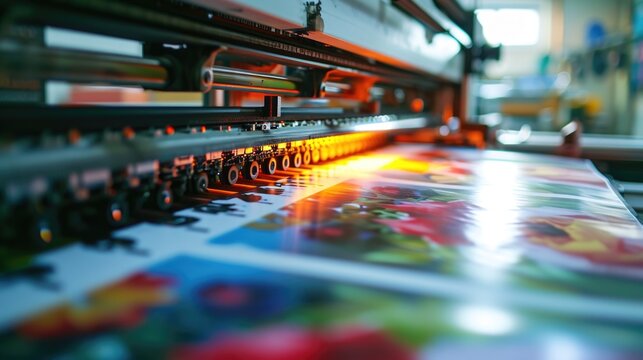The history of offset printing is a fascinating journey that highlights the evolution of the printing industry. Offset printing, which transformed the way we produce printed materials, has a rich history that dates back to the early 20th century. This method has not only enhanced the quality of prints but also significantly increased the efficiency and speed of production. As we delve into the history of offset printing, we’ll discover how it became a staple in the printing industry and continues to impact modern printing techniques.
Understanding the history of offset printing is crucial for business professionals, as it sheds light on the advancements that have shaped today’s printing capabilities. Offset printing remains a preferred choice for high-volume commercial printing due to its ability to produce consistent, high-quality prints.

The Origins of Offset Printing
Offset printing, also known as offset lithography, originated in the early 1900s. The initial concept of offset printing was developed to improve the quality and efficiency of traditional printing methods. The technique involves transferring an inked image from a plate to a rubber blanket and then onto the printing surface. This indirect printing method provides a cleaner and sharper image, making it ideal for high-volume production.
Key Developments in Offset Printing
Early Innovations
The early innovations in offset printing were driven by the need to produce clearer images with less wear on the printing plates. By using a rubber blanket, the pressure on the printing plates was reduced, leading to longer plate life and improved print quality. This innovation marked the beginning of a new era in the printing industry.
Technological Advancements
Over the years, technological advancements have played a significant role in the evolution of offset printing. The introduction of computer-to-plate technology has streamlined the prepress process, allowing for faster and more accurate plate production. Furthermore, advancements in ink and paper technology have enhanced the quality and durability of printed materials.
Learn more about offset printing
Impact of Offset Printing on Modern Printing Techniques
Offset printing has had a profound impact on modern printing techniques. Its ability to produce high-quality prints at a low cost makes it a preferred choice for large-scale commercial printing. The efficiency of offset printing has also influenced the development of digital printing technologies, which aim to combine quality with flexibility.
Comparison with Digital Printing
While digital printing offers flexibility and quick turnaround times, offset printing remains superior in terms of cost-effectiveness for high-volume production. The choice between offset and digital printing largely depends on the specific needs of a project, including the desired print quality, volume, and budget.
The Future of Offset Printing
As technology continues to evolve, the future of offset printing looks promising. Innovations in automation and sustainability are expected to further enhance the efficiency and environmental impact of offset printing. The integration of AI and IoT in printing processes is also anticipated to streamline operations and improve print quality.
Conclusion
The history of offset printing is a testament to the power of innovation in the printing industry. From its origins in the early 20th century to its current status as a leading printing method, offset printing has continuously adapted to meet the demands of modern consumers. As we look to the future, offset printing will undoubtedly continue to play a crucial role in the world of printing.

FAQs
What is the main advantage of offset printing?
The main advantage of offset printing is its ability to produce high-quality prints at a low cost, especially for large volume projects.
How does offset printing differ from digital printing?
Offset printing uses plates to transfer images onto a surface, while digital printing prints directly from digital files. Offset is more cost-effective for high volumes, while digital offers flexibility for smaller runs.
What are some recent advancements in offset printing?
Recent advancements include the integration of computer-to-plate technology, improvements in ink and paper quality, and the use of AI and IoT to enhance printing processes.
This article contains affiliate links. We may earn a commission at no extra cost to you.







